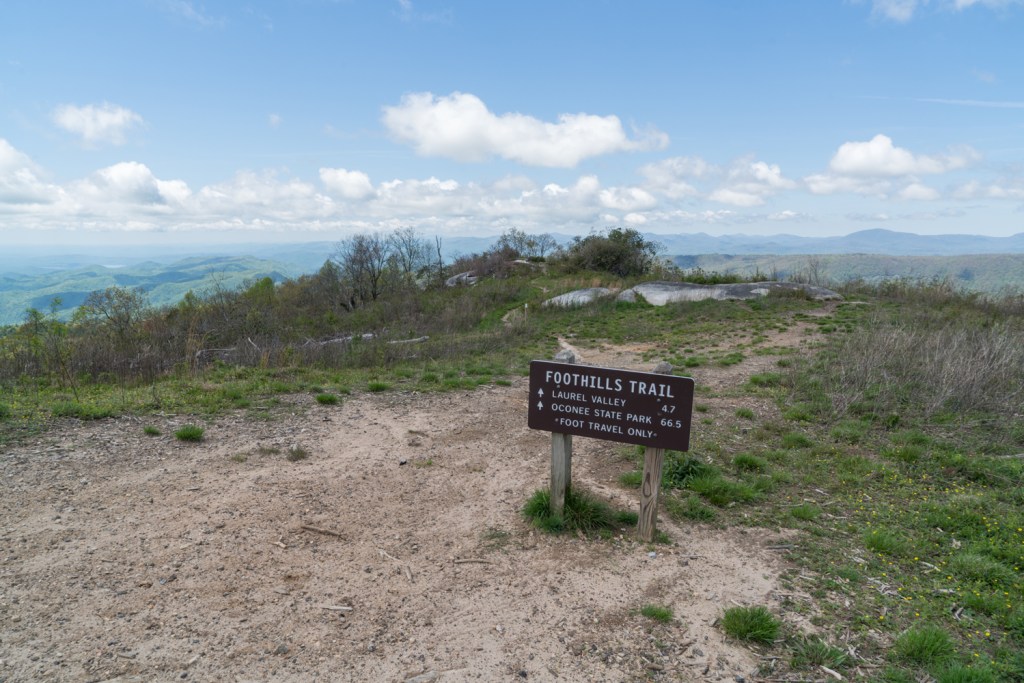In September, the North Carolina Forest Service cut the ribbon on Headwaters State Forest, opening to the public a 6,730-acre tract of mountains and streams along the North Carolina-South Carolina border. The land had been owned by former congressman Charles Taylor, and local and national land conservancies worked for nearly a decade to bring the forest into the public fold. Its protection ensures the long-term preservation of an important water source for local communities and wildlife habitat as well as securing an additional recreational opportunity for hikers.
The forest was a conservation priority because it encompasses the headwaters of the East Fork of the French Broad River, and was one of the largest tracts of privately owned land in Western North Carolina. “Conserving properties of this size is a rare opportunity,” said Jordan Boner, North Carolina director for the Conservation Fund.
To ensure the purchase and transfer of the land to the North Carolina state forest system, the Conservation Fund secured a series of grants over the course of a decade, including $9.3 million from the Land and Water Conservation Fund through the Forest Legacy Program. “It gives us a chance to protect an entire landscape, from the top of the watershed all the way down to the banks of the river,” Boner added.

Only foot traffic is allowed in Headwaters State Forest. The land is light on amenities but stocked with exploration, waterfalls and wild trout. (Photo Credit: Steve Orr)
Headwaters State Forest fills a gap in a complex of public land that runs along the state border, creating a contiguous swath of public lands that includes Gorges State Park in North Carolina and the Mountain Bridge Wilderness Area in South Carolina. Several miles of the 77-mile long Foothills Trail run through the new state forest, and South Carolina’s tallest mountain, Sassafras Mountain, sits along its southern border. The forest is also home to a dozen waterfalls and more than 50 miles of designated Wild Trout Waters.
The recreation opportunities are exciting, however, rangers emphasize that Headwaters is nothing like popular DuPont State Forest, which attracts thousands of mountain bikers and hikers every year. “There’s no visitors center, no restrooms, no cell service … it’s remote and rugged and we’re managing it for backcountry recreation,” said Michael Cheek, assistant regional forester for the N.C. Forest Service.
Headwaters has only a few established trailheads, but a 25-mile network of former logging roads are ready for exploration. While foot travel is welcome, no mountain biking or camping is permitted. And only a few of the numerous waterfalls on the property have been named and mapped.
“This forest is for people who want to get away from the crowds,” Cheek said. “Get out there and explore. Use your map and compass and check stuff out. Just make sure you can take care of yourself, and don’t expect the sort of amenities you find at DuPont.”

A scenic viewpoint along the Foothills Trail. (Photo Credit: Steve Orr)
While Headwaters represents a blank canvas for adventurous hikers and anglers, we’ve compiled a short list of highlights to help jumpstart your explorations.
East Fork Falls
This is an easy-to-reach, 18-foot-high waterfall with a clear pool at the bottom big enough for swimming. And bring your fly rod; All of the streams within the state forest are high-quality, with a Wild Trout Waters designation. East Fork Falls is a short walk off of East Fork Road, one of the main access points for the forest.
Foothills Trail
A nine-mile spur of the 77-mile Foothills Trail runs through the forest. You can get on the Foothills at Sassafras Mountain and take the trail into Caesars Head State Park, passing through Headwaters along the way.
Bursted Rock
This might be the best view in the new forest. Bursted Rock is a tall outcropping, accessed along the Foothills Trail, with long-range views of Table Rock, a granite dome across the border in South Carolina. Start at the Gum Gap trailhead at the end of Happy Acres Road. It’s a tough 5.2-mile round-trip hike.


